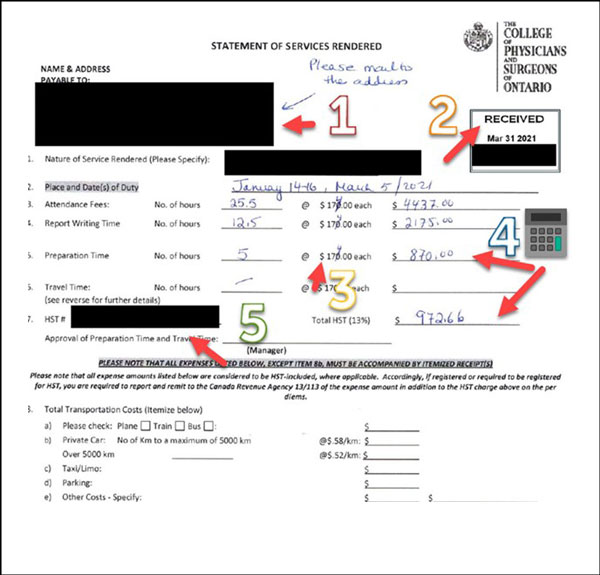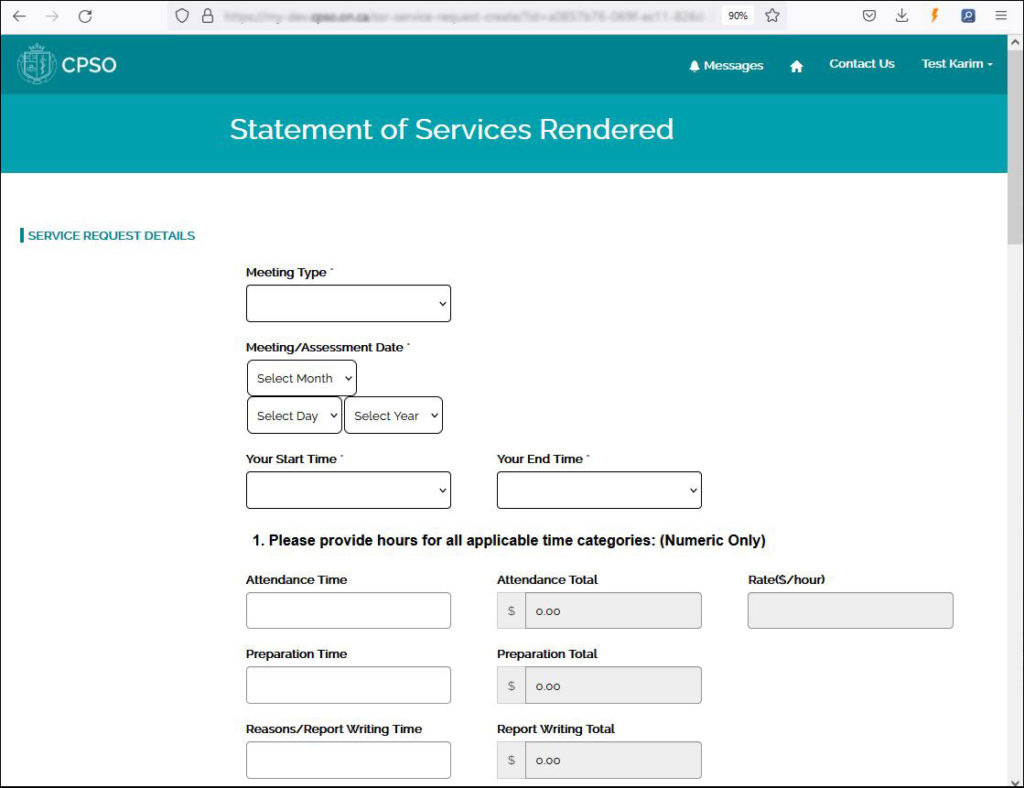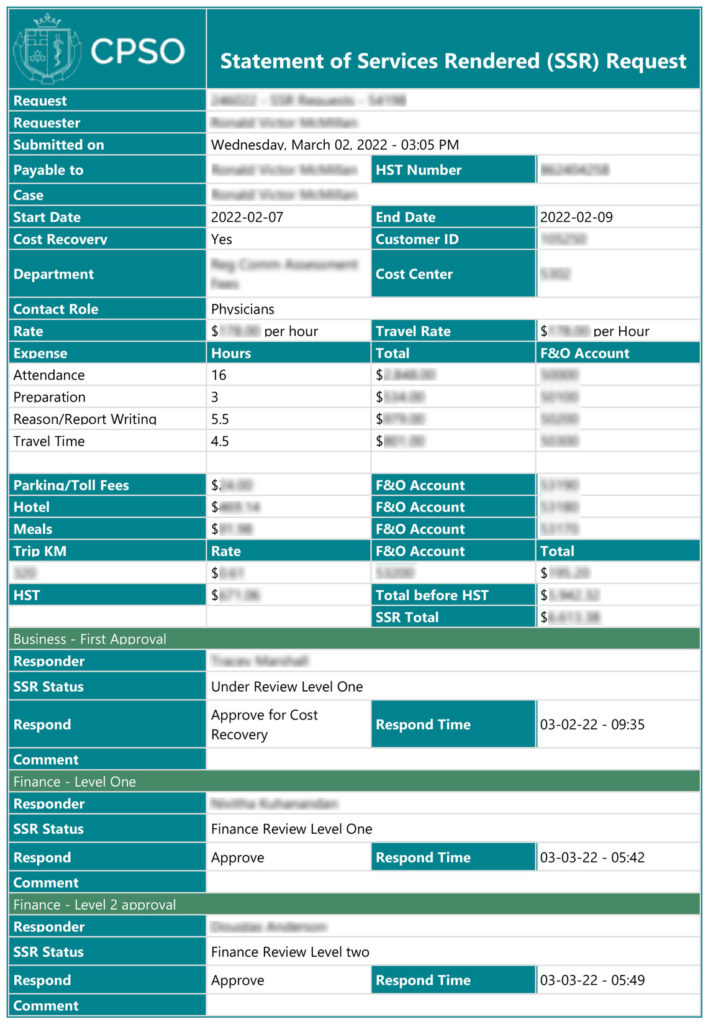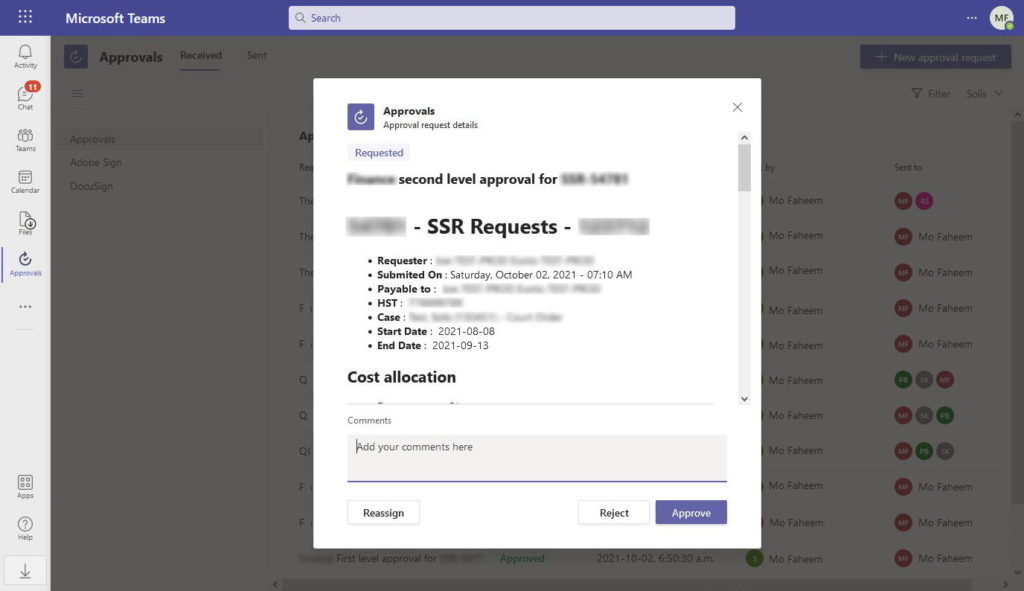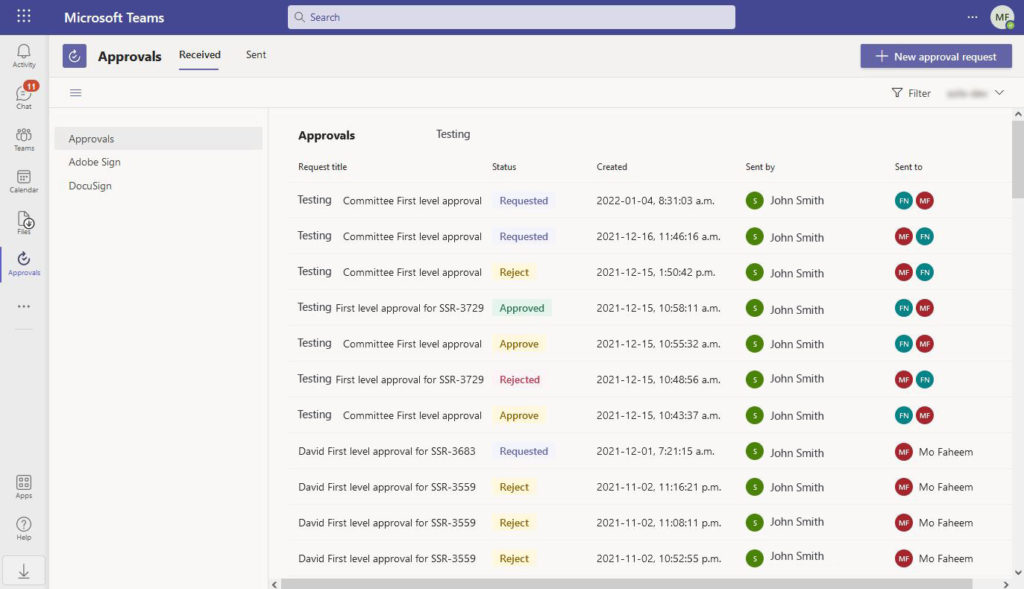The College of Physicians and Surgeons of Ontario (CPSO) regulates the practice of medicine in Ontario, and all practising physicians in the province are required to be members. The role of CPSO and its authority and powers are set out in the Regulated Health Professions Act (RHPA), the Health Professions Procedural Code under the RHPA, and the Medicine Act.
About CPSO
For more than 150 years, CPSO has worked with medical professionals at every stage of their careers, from residents in training to independent practitioners. Today, with just over 400 employees, CPSO works to fulfil its mandate to grant licensure to Ontario physicians, set practice standards and policies, investigate complaints against physicians from patients, the public, and other health stakeholders, and discipline when applicable.

For more information about CPSO, please visit the college website.
“Serving the people of Ontario through effective regulation of medical doctors.”
— College of Physicians of Ontario (CPSO) Mission
Yet, the organization was dependent on numerous antiquated legacy systems to do this important work. Following the arrival of new leadership in 2018, CPSO realized it needed a full-scale digital transformation to continue serving the public trust in Ontario’s health system. CPSO’s digital transformation journey lasted more than two years, but in end, it moved the organization, which was highly dependent on paper-based producers, to a much more modern and automated digital system.
The process involved adopting various Microsoft business applications and solutions, such as Azure, SharePoint, Dynamics 365 Customer Service, Dataverse, Power Apps Portals, and Dynamics 365 Finance and Operations. By harnessing these tools, CPSO enabled its staff to be more effective and efficient in their work, streamlined the process for new applicants applying for membership to practise medicine in Ontario, and offered a self-serve portal for its members.
One of CPSO’s initiatives was to automate the Statement of Service Rendered (SSR) process, which was previously under the old working method and required a substantial amount of manual revision and calculation before the procedure was entirely digitally transformed.
Digital transformation
Statement of Service Rendered (SSR)
Statement of Service Rendered (SSR), which in essence is an invoice, is how CPSO Council and committee members, as well as its assessors, get paid for their services to the College. Every single SSR consists of a list of actions performed in a period, and this SSR has to be related to either a committee meeting or a case with the College.

“Each SSR must be approved by the appropriate area that supports the committee or assessment type, then proceeds to the Finance Department for approval and payment. The efficient reimbursement of Council, committee members and assessors are important as they assist the CPSO in carrying out its mission statement.”
— Leslee Frampton, Manager, Finance Department
SSR roles
To understand the SSR more, we need to understand the roles of Council members and peer assessors, as follows.
Council Member
CPSO is governed by Council and has statutory and non-statutory committees to fulfil CPSO’s mission. Those committees include members who are practising physicians, as well as public members appointed by the provincial government.
Peer Assessor
Peer Assessors conduct objective practice reviews to assess whether the physician is meeting the standard of care by practising medicine in a safe, ethical, and competent manner.
The SSR rate
The hourly SSR rate is approved each year at the December meeting of the Council. Hence, Council and committee members are required to follow up on the change and amend the hourly rates on their SSR forms rapidly.
The Challenge
Having an SSR paper-based process was not easy, especially with the high volume of SSR submitted each month and the complexity of the approval process that each SSR can go through to get paid. The legacy SSR process caused issues that affected the submitter, the department, and CPSO’s Finance team.
Issues with the SSR process internally for departments and Finance
- Inconsistency due to 14 different PDF SSR Forms used by various College departments, which added complexity downstream on Finance to process the versions of the form.
- The high volume of SSR processed, approximately 400 to 500 SSR per month.
- Long waiting times or lost SSRs due to the complex approval process for each department.
- Challenges enforcing any procedures on processing SSRs.
- time-consuming and inefficient manual data entry to the financial system (Dynamics SL).
- Slow, labour-intensive processes for issuing and mailing cheques for each SSR.
- The area coordinator had to route the SSR through the approval process manually.
- Additional workload on the Finance department to ensure calculations were correct.
- Each SSR had to be routed to the correct department and then assigned to the related cost centre, resulting in incorrect accounting.
- Manual audit trail by stamping date of receipt
Submitter challenges
- Re-entering in data each time, such as personal information and mailing address
- Manually changing the rate for each submission and keeping the rate current.
- Manually calculating each SSR request for each item and the total, raising the issue of human error.
- Inputting his/her HST number for each SSR.
- Scanning and emailing the form and supporting receipts
- Lack of clear communication for the submitter
Solution
CPSO managed to streamline and fully automate the entire SSR process using Microsoft Business Applications, starting with submission up to the payment.
Dynamics 365 Customer Service CE
- On board committee members and assessors.
- Cases & committee meetings from Dynamics 365 are the source of truth.
- Manage submitter roles and qualifications (physicians, specialists, nurses and others).
- Manage the SSR submitters’ roles and the ability to update it annually or when needed.
- Manage departments, cost centres, and approval chain.
SharePoint
- Integrated with Datavese’s record.
- Store all related documents, such as receipts.
Power App Portal (self-serve portal)
- Submit and follow up SSRs.
- Provide a unified form for all departments.
- Add or Update HST information.
- Calculate the SSR.
Dynamics 365 Finance and Operation F&O
- Process EFT payment.
- Financial record & allocating cost centre.
MS Teams & Outlook (Power Automate Approval)
- Rout the request to the next approver and assign the correct cost centre.
- New requests notifications with complete data.
- Approve directly from MS Teams & Outlook.
- Add comments and instructions.
- Validate vendor exists in Dynamics F&O.
Azure Logic Apps
- Integrate Dynamics 365 CS and F&O.
- Update Dynamics 365 CS with the payment.
Although SSR was a highly complex solution, it took less than three months to design, deliver and implement. The SSR implementation started mid-July 2021, and CPSO went live in early October of the same year.
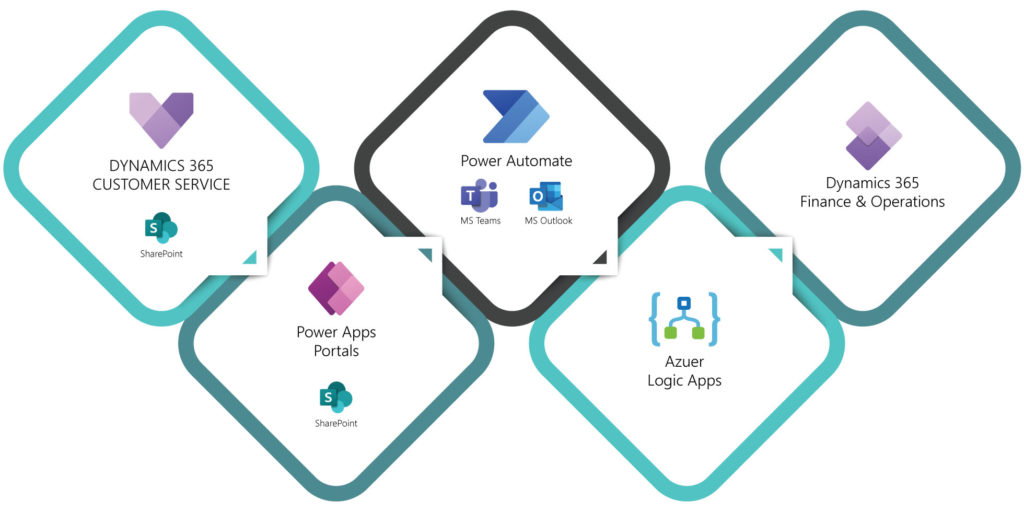
Change Management
The SSR process was challenging to design, develop, implement and test in less than three months. CPSO faced many obstacles and there were issues until the system became stable. Here are some examples of the challenges the CPSO overcame.
- Comprehensive training on multiple system fronts for CPSO internal staff, coordinators, the Finance team, committee members and assessors to ensure high adaptation.
- Conduct testing sessions by the different personnel using the system.
- Compatibility with different platforms, operating systems and browsers, mainly that the external team uses the system with other preferences.
- Following every SSR request and ensuring that all requests are processed appropriately.

“The electronic SSR has simplified the submission and payment of invoices. The process is user friendly and drop boxes ensure accuracy of the submission. The SSR can be completed immediately at the end of the relevant meeting ensuring timely payment. The permanent record in the Portal eliminates the need to keep a paper file. Coupled with the electronic payment system, invoices are now paid quickly without the inconvenience of depositing paper cheques”
— Dr. Thomas Bertoia, Chair, Finance and Audit Committee
Benefits and Results
The newly deployed SSR system made a significant leap in how CPSO handles SSRs.
Now, the SSR request is no longer a manual and paper-based process. It takes an electronic journey in which it is submitted, reviewed, approved, and paid—all in a digital space.
“The new system took a very inefficient and manual system and transformed it to an electronic and more efficient process…”
— Leslee Frampton, Manager, Finance Department
CPSO has seen countless improvements after the new deployment, including:
Unified the SSR forms
The SSR form on the members’ portal consolidated 14 different SSR PDFs into one highly responsive web form. The new approach not only unified the form but the entire process, which resulted in a much simpler and more well-defined user experience from start to finish.
Self-Serve Portal
Through the members’ Power Apps Portal, Council, committee members and peer assessors can now submit new SSRs, upload supporting documents, and calculate the SSR value.
Submitters can also communicate with the concerning department’s coordinator through related portal messages, and they can also follow up on the progress of their requests. They can also access a complete history of all previously submitted SSRs.
The Power Apps Portal also enables SSR submitters to manage their HST numbers without contacting CPSO’s team to add or change their numbers.
Implement Policies and Business Rules
For the first time, CPSO can enforce business rules and policies on SSR requests and SSR submitters. For example, the maximum number of days allowed to submit the SSR after conducting the service can be now controlled according to CPSO management instructions.

“Thanks to our new SSR process, we are providing our members the quality service they deserve. Piles of paper forms became a streamlined workflow that serves everyone’s needs. The auto-complete and auto-calculate features make us more efficient and keep our records consistent and complete. Nothing ever gets lost because all payments are searchable and backup receipts are electronically attached at each step of the process. We’ve taken a giant step into modernity and it feels fantastic.”
— Kyle Nicholas, Accounts Payable Specialist | Finance
Payment Method
CPSO used to pay committee members and assessors by printing, signing and mailing cheques, which added effort on the CPSO Finance team and waiting time for the submitters. The new system allows all the SSRs to be paid via Dynamics 365 Finance and Operations using Electronic Fund Transfers EFT, saving time and effort.
“The new system also facilitated the ability to move from cheques to Electronic Funds Transfers.”
— Leslee Frampton, Manager, Finance Department
Taxable Reports
The new SSR system has also enabled CPSO’s Finance department to issue T4As directly from Dynamics 365 Finance and Operation without the need for any manual procedure.
Accurate Calculation
The SSR contains highly complex Formulas that consider the many changing factors involved in an invoice, such as the different rates, the submitter’s role, and the date of activity. The old system manually calculated and reviewed the SSRs, which often resulted in errors. The new, digitized system calculates and processes every SSR with 100% accuracy.
SSR Report
One of the tangible outcomes that replaced the handwritten report was the generated locked SSR pdf report stored in SharePoint and accessible by the CPSO team and the submitter. This report provides comprehensive, detailed information about the request, cost allocation, HST, related cases or meetings, the rate used, the submitter’s role, and many other valuable data that help the approvers make their decision concerning the SSR quickly.
The PDF reports are also downloadable for submitters from the members’ Power Apps Portal which help them to track the progress of their request.
Audit Trail
The SSR report also contains an audit trail of each action taken to process the SSR by the coordinator, approver, or the Finance team. The audit trail can record comments given by the team and document the decision taken by approving or rejecting directly from MS Teams or MS Outlook.
MS Teams and Outlook Notifications
The SSR approval process is highly complex, involving many staff and departments. In the previous manual systems, submitters had to go through coordinators to process their requests in the right direction. CPSO depended on each approver to know where the request should be forwarded after approving or rejecting the SSR request.
Today, the SSR gets routed automatically according to the business rule in place. Moreover, the CPSO team gets notified on MS Teams and Outlook with full details. They can act on the request directly from MS Teams or Outlook by approving, rejecting, or adding a comment.
In addition, through MS Teams, approvers can now review all previous and current pending requests. Managing the request is much easier than before, as the list of requests highlights the given decision.
Advanced Reporting and Forecast
Finally, CPSO now can analyse SSR requests more than before. For example, CPSO can tailor SSR cost reports to a department’s resource utilisation.
Summary
The development of the new SSR system benefited both CPSO and the person submitting the claim. This transformation took a very manual process and automated it, creating numerous efficiencies. The SSR now moves electronically from the submitted, through the approving department and on to Finance for payment. The electronic workflow provides all parties with date information on where the claim is in the workflow. Payment by EFTs provides payment in a timelier manner and the workflow strengthens the College’s internal controls.
All in all, it was a great process improvement that assists the College in fulling its mission:
Serving the people of Ontario through effective regulation of medical doctors


